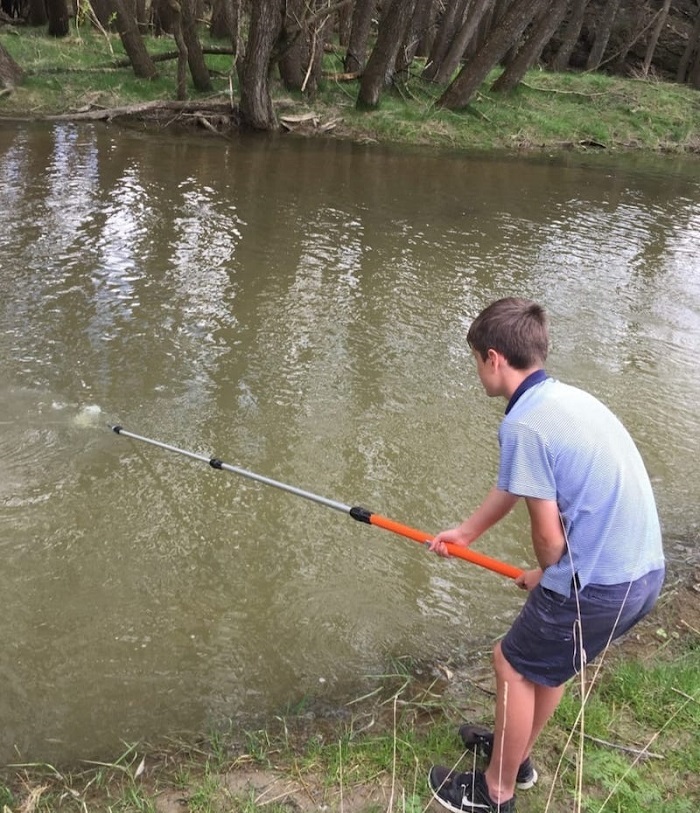Central schools embrace Enviroschools programme
Anna Robb
16 November 2022, 4:45 PM
 Cromwell Primary students planting natives beside Lake Dunstan
Cromwell Primary students planting natives beside Lake DunstanCentral schools’ positive environmental action through the nationwide Enviroschools programme is making a difference; improving local creeks and streams and boosting native plantings.
Otago Regional Council’s (ORC) regional enviroschools coordinator Robyn Zink said it’s inspiring to see how motivated young people are to create positive change in their schools and communities in Otago.
Across the country there are more than 1,000 schools and more than 450 early childhood centres involved in Enviroschools, while in Otago there are 88 schools and 12 early childhood centres participating.
“We’re now connecting with over 23,500 tamariki and students around Otago,” Robyn said.
Enviroschools purpose centres on creating a healthy, peaceful, sustainable world through learning and taking action together.
Children and young people are empowered to connect with and explore the environment, then plan, design and take action in their local places in collaboration with their communities.
Robyn said five guiding principles underpin the Enviroschools approach: empowered students, learning for sustainability, Māori perspectives, respect for the diversity of people and cultures, and sustainable communities.
Omakau School achieved Bronze Enviroschools status this year. The school is working with local farmers to care for creeks and streams. Along with planting, students are carrying out water testing around the catchment to measure the difference their riparian planting is making.

An Omakau School year eight student carrying out water testing, measuring pH, temperature, clarity and more
Students have noted that bird life is returning to planted areas and nests are being built.
Maniototo Area School students have been getting their hands into the soil as well
and learning all about creating healthy soil.
Alexandra Primary School (APS) has planted another 50 native trees at their school to enhance their environment.

Planting seedlings at APS where the plan is to create a forest trail
Cromwell’s Goldfields Primary School (GPS) has been looking at local legends and evidence of the arrival of the first people in the area, aligning with the respect for the diversity of people and culture principle.
Students focused on the journeys of Pacific people across Te Moana-nui-a-Kiwa since 900 AD, learning about the skills necessary to cross the Pacific Ocean, including star maps, bird migrations, wave patterns and seasonal winds.
The students created displays for the local museum to share the things they had learnt with whānau and the community.
Robyn thanked teachers, school staff and community members that support Enviroschools in Central and Ōtākau.
“Even though it has been another tough year, Enviroschools have been really busy, which shows the commitment and enthusiasm of teachers and students to creating a healthy, peaceful and sustainable world.”
The Enviroschools programme is supported by Toimata Foundation and founding partner Te Mauri Tau, with a large national network of 15 regional partners.
The network includes 14 regional councils, 49 territorial local authorities; or 80 per cent of all councils, and 19 early childhood associations.
Another initiative to support local native planting has been created by Haehaeata Natural Heritage Trust (HNHT) in time for Christmas.
People can gift a plant or to support a local native planting project using HNHT eco sourced plants. Plants will be planted at the next planting date by a community group. These plantings are on public land so can be visited any time.
After buying a plant ($10) HNHT will send an email to the recipient outlining what project is being supported and how many trees have been gifted.
See the HNHT online form here and see the Enviroschools website for more information and case studies.




